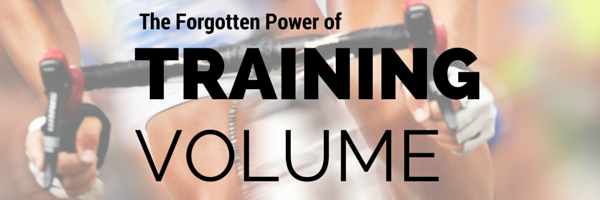Are you looking to improve your cycling performance? If so, you may wonder how much time you need to spend in the saddle each week. Unfortunately, there is no easy answer – it depends on your goals and training history.
However, one thing that’s often overlooked is the importance of training volume.
In this post, we’ll take a closer look at what volume is and why it’s so important for cyclists of all levels. We’ll also provide some tips for increasing your total training volume safely and effectively. So if you’re ready to take your cycling to the next level, keep reading!
Training Volume – Atomic habits in action
I remember thinking, ‘what a waste of time’ riding additional relatively low-intensity kilometers at the end of a long training session.
I didn’t realize that he was doing that little extra to achieve better results. All those additional km added up over time.
And it worked!
He consistently performed just a little better than me during the entire spring season.
This experience taught me how minor tweaks to your current training could make significant improvements over time. And also illustrates a valuable point: small changes are more accessible to consume than major ones.
Sometimes you should take that extra kilometer.
It’s more than just a mental shift.
Even small steps add up over the long term. For example, if you train for five days per week and add 5km to each ride, you’ll end up with 100km extra per month.
That’s more comfortable to consume than adding an extra 100km ride on one of your recovery days.
Also, it gives a mental boost to know that you are pushing just a little more complicated. If you increase your training volume now, there is a good chance that your performance will go up within six weeks.
How much should your training volume increase?
I suggest you add about 2 hours to your current training volume.
If you only train 5-6 hours per week, it might sound like a lot to add two hours to your training volume. However, it is possible to go up to a 7-8 hours training volume and still have at least a few days without training per week.
Therefore, you can quickly increase your training volume without overtraining using a reasonable training structure.
If you are already training more than 20 hours per week, you should consider whether other areas in your training need more attention. Adding more volume might not be the answer for you.
One of the most important tips I give to riders is structure.
It’s probably the single most valuable change I make to training plans. You’ll get fitter if you have a solid structure in your training with a perfect mix of hard days and recovery.
If you want to increase your training volume and find it challenging to find enough time for training, I suggest you analyze where you spend your time. You’d be surprised to see how much time you spend on non-training tasks.
Many riders spend enormous amounts of time on activities that don’t train.
They chat with each other before and after each training session, repair and optimize bikes, watch cycling races on the television and read cycling magazines.
I understand that cycling is a hobby, and most of these actions are part of it.
However, if you want to find more time for cycling because you desperately want to increase performance, you need to eliminate the time consumers.
For example, limiting chatting before and after training to a minimum sounds reasonable.
Also, it’s not unlikely you can squeeze in an extra hour or two for training if you decide to ride on your bike instead of watching a professional cycling race on the television. But, on the other hand, perhaps you have a time consumer that can be limited or eliminated.
Remember that if your overall goal is important enough for you, it is also easier to find the solutions to make your goals realistic (hint: always have a plan with your training). Anytime, you can always ask yourself whether a specific action takes you closer to your goal or not.
Training Volume Does Matter
Interval training is essential, but the additional volume (at endurance intensity) has improved performance for many athletes. Generally, people with large training volumes achieve fantastic results.
You can argue that these riders could achieve the same results with less training. I firmly believe in time-effective training, but I also agree that volume training is a safe and valuable component in endurance training.
However, it is worth noting that endurance training can achieve outstanding results without any organized interval training. Doing a heavy amount of long-distance endurance training combined with a few races has been a winning training formula for many professional riders over the last 50 years.
I can think of many arguments for adding VO2 max training or other sophisticated intervals that might be better than sole endurance training. However, it is remarkable how well riders that rely on endurance training only perform in races.
I won’t discuss whether these riders should change their training methods or how much you can gain with a different approach.
Instead, I use these riders to illustrate how strong results you can achieve with endurance training and use that as an example of how an increased training volume can make you better.
If you ask a professional rider from the world tour, I’ll be surprised if he hasn’t at least the magically 10.000+ hrs under his belt. So training volume definitively plays a significant role for professional riders and other race cyclists.
If you want a simple way to add hours to your weekly training volume, there is a safe and proven 6-week training plan here.

